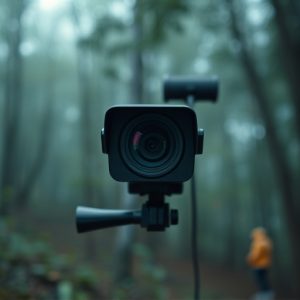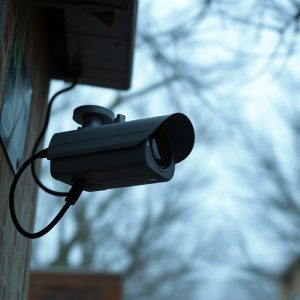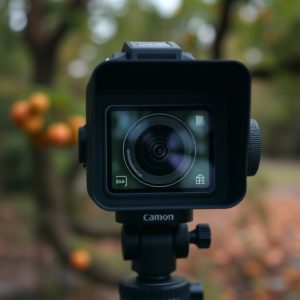Mastering Covert Surveillance: Spy Camera Placement & Detection Techniques
When considering an Indoor Spy Camera With Night Vision, balance security needs with ethical conside…….
When considering an Indoor Spy Camera With Night Vision, balance security needs with ethical considerations and legal constraints. Prioritize high-quality sensors, infrared technology, and strategic placement for effective covert recording while respecting privacy rights and avoiding detection.
In an era where privacy is a delicate balance, understanding covert recording equipment placement and detection is paramount. This comprehensive guide delves into the intricacies of setting up and avoiding detection for indoor spy cameras equipped with night vision. From navigating legal considerations and ethical implications to mastering effective placement strategies and advanced detection techniques, this article equips you with the knowledge to conduct discreet surveillance responsibly.
- Understanding Legal Considerations and Ethical Implications
- Choosing the Right Indoor Spy Camera with Night Vision
- Effective Placement Strategies for Discreet Surveillance
- Advanced Detection Techniques to Avoid Being Caught
Understanding Legal Considerations and Ethical Implications
When considering covert recording equipment placement, it’s crucial to navigate a complex landscape of legal considerations and ethical implications. The use of indoor spy cameras with night vision, for instance, raises significant privacy concerns, as they can capture sensitive information in spaces where individuals expect a reasonable expectation of privacy. In many jurisdictions, including the United States and several European countries, recording conversations or activities in a private residence without explicit consent is illegal.
Ethical implications extend beyond legality, prompting careful reflection on the purpose and consequences of surveillance. It’s essential to weigh the potential benefits against the right to privacy and ensure that any use of covert equipment adheres to ethical guidelines. Respecting personal boundaries and maintaining transparency are key to balancing security needs with individual freedoms, especially in domestic settings.
Choosing the Right Indoor Spy Camera with Night Vision
When selecting an indoor spy camera with night vision, it’s crucial to consider its sensitivity and clarity in low-light conditions. Look for models equipped with high-quality sensors and advanced infrared technology to ensure superior visibility even in complete darkness. These features are vital for capturing clear, detailed footage of activities within enclosed spaces.
Moreover, the best indoor spy cameras offer adjustable settings for day and night operations. This allows users to optimize picture quality based on lighting environments, ensuring optimal performance around the clock. In terms of placement, strategic positioning near windows or in areas with natural light during the day can significantly enhance the camera’s effectiveness at night.
Effective Placement Strategies for Discreet Surveillance
To achieve effective discreet surveillance, strategic placement of covert recording equipment is paramount. An Indoor Spy Camera With Night Vision, for instance, can be a powerful tool when strategically positioned to capture unawares moments without raising suspicion. Consider hiding cameras in common yet often overlooked areas like corners, behind decorative objects, or within everyday household items that double as surveillance devices. Ceilings, walls, and even door frames offer ideal locations with minimal visibility disruptions.
A successful placement strategy must also account for lighting considerations, especially when aiming to capture clear images at night. Utilizing infrared technology in indoor cameras ensures optimal visibility in low-light conditions, making it easier to record without attracting attention. Additionally, employing motion sensors can further enhance the effectiveness of covert surveillance by activating camera recording only when movement is detected, thus conserving battery life and storage space.
Advanced Detection Techniques to Avoid Being Caught
In the world of covert recording, staying one step ahead is paramount to ensure effective surveillance. Those who deploy hidden cameras must be adept at employing advanced detection techniques to avoid being caught. One of the primary tools in this arsenal is the Indoor Spy Camera With Night Vision, designed to operate discreetly and capture high-quality footage even in low-light conditions. These sophisticated devices can be placed strategically in various indoor settings, from offices to homes, making them nearly invisible to the naked eye.
The key to successful detection avoidance lies in understanding the technology’s limitations. For instance, while infrared (IR) night vision is excellent for seeing in darkness, it leaves a telltale IR signature that can be detected by specialized equipment. Skilled individuals and security systems are on the lookout for these signatures, making it crucial to use cameras with advanced IR technology that minimize this heat signature. Additionally, using non-intrusive mounting methods and covering camera lenses with subtle, nondisruptive designs help maintain the secrecy of the surveillance operation.
Covert recording equipment, while offering valuable surveillance capabilities, requires careful consideration of legal boundaries and ethical responsibilities. By understanding these factors and employing advanced tools like an indoor spy camera with night vision, strategically placed for discreet observation, you can maintain a safe and secure environment without infringing on privacy rights. Mastering detection techniques further ensures your efforts remain unnoticeable, striking a balance between security and respect for personal boundaries.


